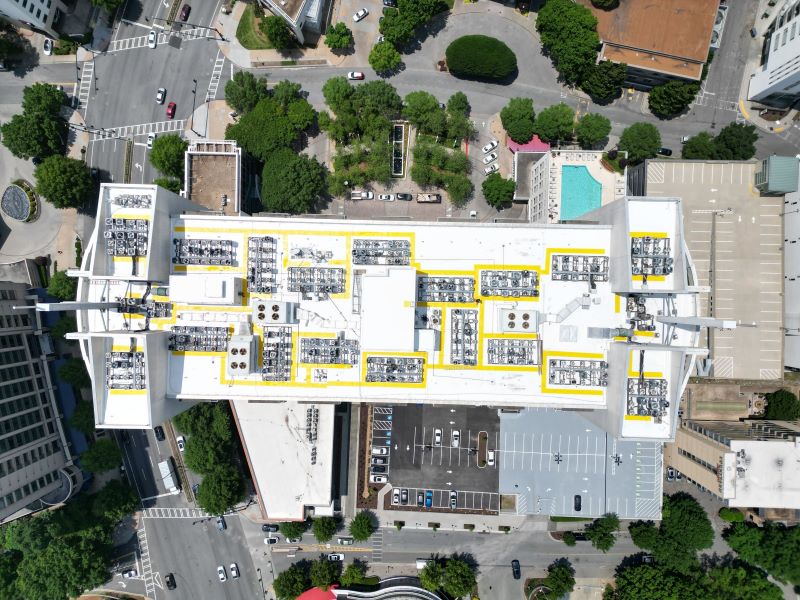When it comes to maintaining a commercial property, one of the most critical decisions building owners face is whether to replace or restore the roof. Both options have their merits and should be carefully considered based on the specific circumstances of your building. In this blog post, we’ll explore the differences between roof replacement and roof restoration, helping you make an informed decision.
Roof Replacement:
Roof replacement involves completely tearing off the existing roof and installing a new one. This option is typically chosen when the existing roof has extensive damage or has reached the end of its lifespan. Here are some key considerations for roof replacement:

1. Long-term Solution: A new roof provides a long-term solution, often lasting 20-30 years or more depending on the materials used.
2. Increased Property Value: A new roof can enhance the property’s value and curb appeal, which is beneficial if you plan to sell or lease the building in the near future.
3. Compliance with Building Codes: Replacing the roof allows you to ensure compliance with current building codes and standards, which may have changed since the original roof was installed.
4. Higher Upfront Cost: Roof replacement is generally more expensive than restoration due to the labor and materials required for a full roof replacement.
Roof Restoration:
Roof restoration involves repairing and recoating the existing roof to extend its lifespan. This option is suitable when the roof is showing signs of wear and minor damage, but is structurally sound overall. Here are the advantages of roof restoration:

1. Cost-Effective: Roof restoration is typically more cost-effective than replacement since it avoids the labor-intensive process of tearing off the old roof.
2. Minimal Disruption: Restoration projects are often quicker to complete and cause less disruption to building occupants compared to replacement.
3. Energy Efficiency: Many roof restoration systems include reflective coatings that can improve energy efficiency by reducing heat absorption, potentially lowering cooling costs.
4. Sustainable Choice: By extending the life of your existing roof, restoration reduces the amount of waste sent to landfills, making it a more environmentally friendly option.
5. Limited Lifespan Extension: While restoration can significantly extend the life of your roof, it may not last as long as a completely new roof, especially if the existing roof is nearing the end of its lifespan.
Choosing the Right Option:
Ultimately, the decision between roof replacement and restoration depends on several factors including the current condition of your roof, your budget, long-term plans for the property, and your environmental considerations. Consulting with a reputable commercial roofing contractor is crucial to assess the condition of your roof and receive expert advice on the best course of action.
In conclusion, both roof replacement and roof restoration have their own set of advantages and considerations. Understanding the differences between the two options and carefully assessing your specific needs will allow you to make an informed decision that aligns with your goals and budget.




